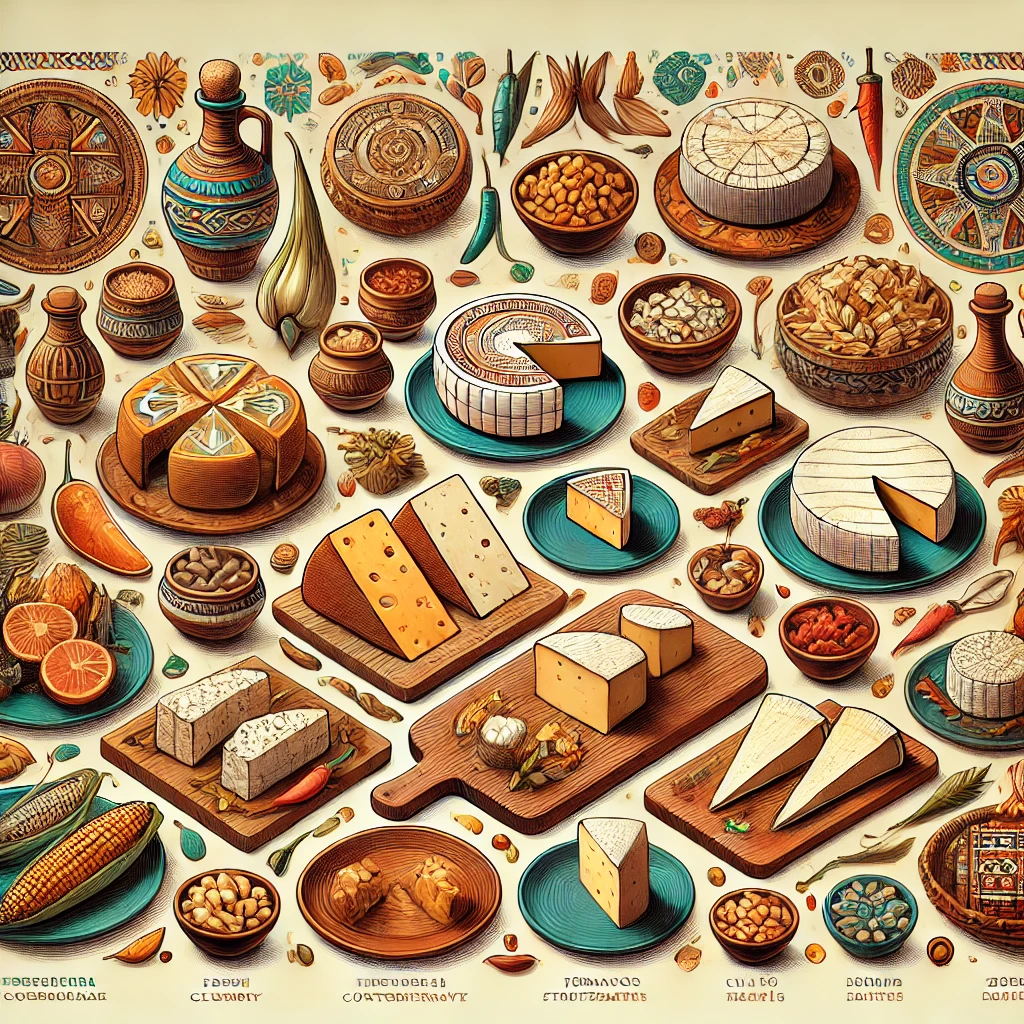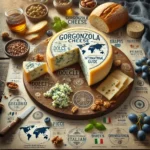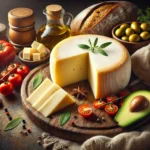Cheese may be synonymous today with European dairying, but few realize that Mesoamerica developed its own unique cheese identity, blending pre-Columbian food practices with colonial introductions of livestock and milk culture. Unlike Europe’s long-rinded aging and monastery production, Mesoamerican cheese evolved through small farms, tropical climates, indigenous fermentation methods, and fresh curd traditions.
From Mexico to Guatemala, Honduras, and parts of Nicaragua and El Salvador, cheese became not just an ingredient but a symbol of cultural fusion—Maize world meets dairy world.
This guide explores the history, styles, flavors, and culinary uses of Mesoamerican cheeses, showing how centuries of adaptation shaped a region’s dairy soul.
🧀 How Cheese Arrived in Mesoamerica
Before Spanish contact, dairy did not exist in the Americas. Indigenous diets were plant- and maize-based, supported by beans, squash, cacao, and native fauna.
The Spanish Impact (16th Century)
Spain introduced:
-
cattle
-
goats
-
sheep
-
rennet-based cheese-making
-
salt-curing
-
curd fermentation
As livestock adapted to new climates and grasses, Mesoamerica began producing cheeses that were:
-
fresher
-
saltier
-
lighter
-
tropical climate–friendly
Rather than replicating Manchego, Cabrales, or Mahón, local producers created fresh-curd, brined cheeses suited to heat, humidity, and rapid household consumption.
🌍 The Geography of Mesoamerican Cheese
Cheese traditions spread across:
| Region | Dairy Influence |
|---|---|
| Central Mexico | Puebla, Oaxaca, Chiapas curd traditions |
| Yucatán | salty, frying cheeses |
| Guatemala | farm-style queso duro & requesón |
| El Salvador | quesillo, queso duro blando |
| Honduras | cuajada and queso seco |
| Nicaragua | quesillo, cuajada, cream cheese hybrids |
These cheeses, though varied, share common roots:
-
brined preservation
-
low melting points
-
high salt content in hot zones
-
fresh production cycles
🧂 Signature Cheeses of Mesoamerica
1. Quesillo (El Salvador, Nicaragua)
Soft, stretchable, mozzarella-like but saltier. Used in pupusas and street snacks.
2. Queso Oaxaca (Mexico)
String cheese ball, pulled-curd (pasta filata style), perfect for melting.
3. Queso Fresco (Regional)
Fresh, crumbly, lightly salted, dairy-clean flavor.
4. Cuajada (Honduras, Nicaragua)
Gently pressed fresh curd, sometimes eaten with honey or cream.
5. Requesón (Mexico, Guatemala)
Ricotta-style, whey-based, light and spreadable.
6. Queso Blanco (Regional)
Salt-brined, soft but sliceable, and ideal for frying.
7. Queso Duro / Queso Seco (Central America)
Aged, salty, grate-friendly—Latin answer to Parmesan.
🥛 Production Style: Fresh, Fast, and Functional
Unlike multi-month aging, Mesoamerican cheese is often eaten within days of production.
Why Fresh Cheese Dominates
-
humidity accelerates spoilage of aged rinds
-
brining and salting preserve flavor safely
-
small-scale farm production cycles fit local markets
This created a daily dairy economy, where cheese is:
-
made at dawn
-
sold in markets by noon
-
eaten by dinner
No caves, no monasteries—just family craft and street commerce.
🍽 Cheese in Mesoamerican Cuisine
Central Use Cases
-
street food filling (pupusas, quesadillas, empanadas)
-
breakfast staple with beans and plantains
-
melting layer over maize tortillas
Classic Pairings
| Dish | Cheese |
|---|---|
| Pupusas (El Salvador) | Quesillo |
| Quesadillas (Mexico) | Oaxaca cheese |
| Baleadas (Honduras) | Queso fresco |
| Tamales | requesón or queso crema |
| Elote & esquites | queso fresco crumble |
Cheese here supports maize, not replaces it: dairy meets corn cosmology.
🌱 Taste & Texture Profile
| Cheese Family | Texture | Taste |
|---|---|---|
| Fresh curd (queso fresco) | crumbly, white | mild, milky |
| Stretch curd (quesillo, Oaxaca) | elastic, melty | salty, buttery |
| Brined (queso blanco) | firm, wet | sharp salt |
| Aged (queso duro seco) | dry, grateable | strong, salty |
Flavors are clean, lactic, lightly buttery, reflecting grass-fed livestock rather than indoor fermentation molds.
🧬 Cultural Identity: Cheese as Fusion
Mesoamerican cheese is a direct result of cultural layering:
-
Indigenous salt, chili, maize dishes
-
Spanish dairy practice
-
African cattle-herding influence in the Caribbean rim
It created a cuisine where fresh cheese became identity:
-
street vendors rolling quesillo
-
Oaxacan cheesemakers braiding balls of string cheese
-
Salvadoran pupusa griddles sizzling at dawn
Cheese became part of the soundscape, smellscape, and ritual of Mesoamerican life.
🧀 Modern Evolution
With refrigeration and export markets, new forms have grown:
-
smoked quesillo
-
cream-enhanced queso fresco
-
small-batch artisanal Oaxaca cheese
-
hybrid panela-style blocks
Yet rural markets still rule:
-
banana leaves wrapping cuajada
-
bulk salt-curd wheels in open stalls
-
cheese sold beside cacao, chiles, and maize
⭐ Final Summary
Mesoamerican cheese is not an imitation of Europe—it is its own world:
-
fresh and fast
-
salt-kissed
-
humidity-adapted
-
maize-compatible
-
ritual and daily nourishment
It represents a continent where dairy was not native, but adopted, transformed, and made essential.
From pupusas to quesadillas, from Oaxaca braiders to Salvadoran griddles, Mesoamerican cheese is living culinary testimony to the region’s capacity to fuse, adapt, and thrive.
FAQs — Mesoamerican Cheese
1. Did cheese exist in Mesoamerica before Europeans?
No, dairy animals and cheese-making arrived with the Spanish in the 1500s.
2. What is the most iconic Mesoamerican cheese?
Quesillo and queso fresco hold the widest cultural presence.
3. Why is cheese mostly fresh?
Climate, humidity, and market cycles favor fast consumption rather than aging.
4. Is queso Oaxaca the same as mozzarella?
Similar in stretch, but saltier and earthier due to local milk profiles.
5. What dishes best showcase Mesoamerican cheeses?
Pupusas, quesadillas, elote with queso fresco, tamales, and baleadas.



